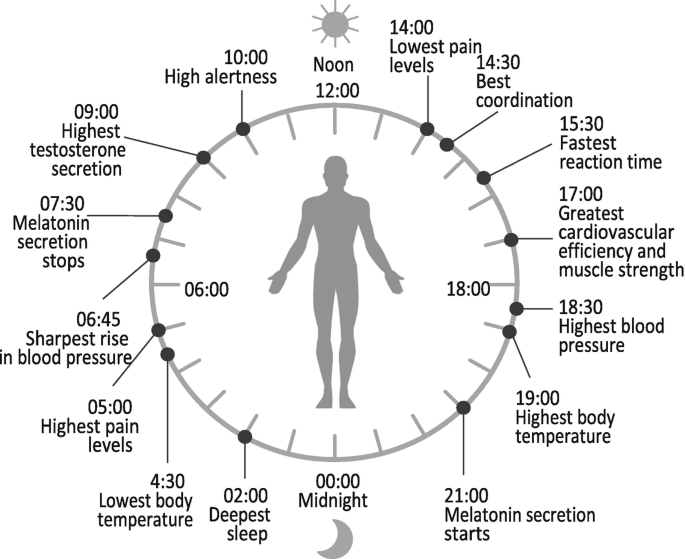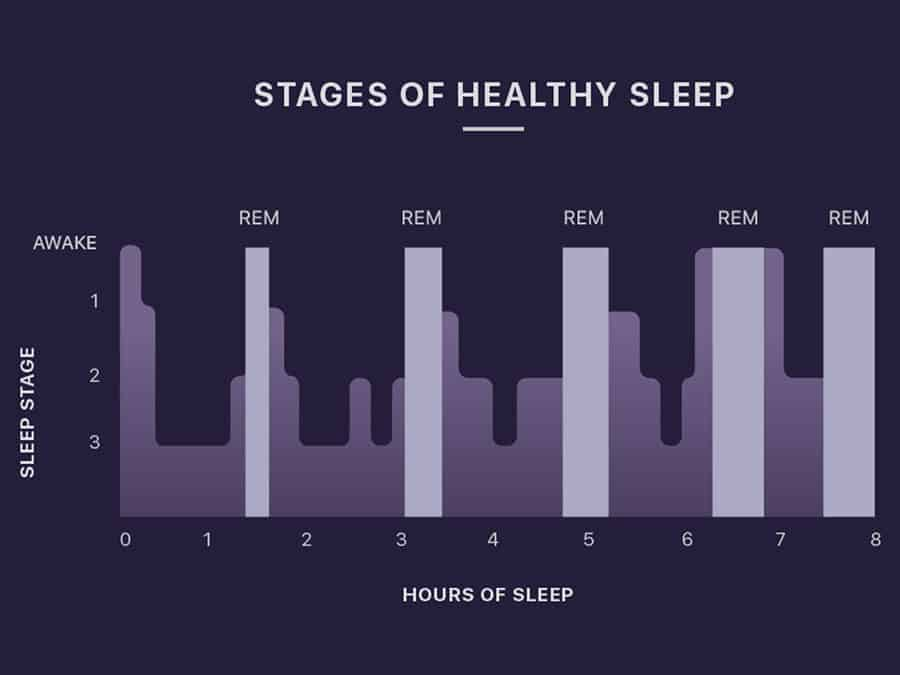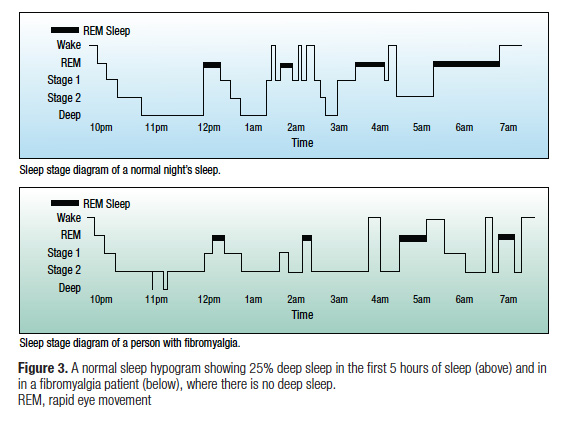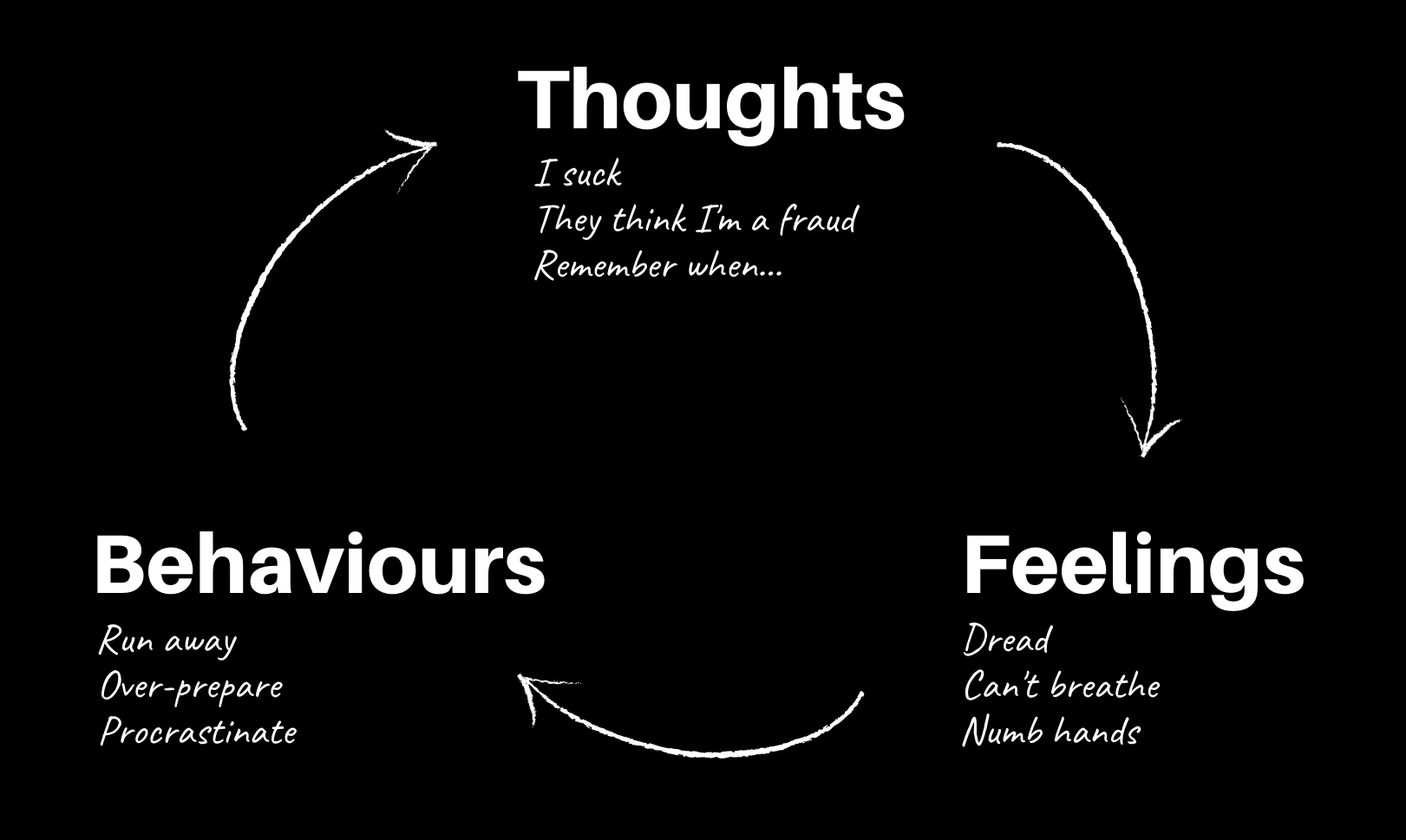Sleep Importance
- Physical, emotional, and mental health
- 1/3 of our lives sleeping
- Most have trouble sleeping at some point.
- Sleep problems are common with chronic pain.
Sleep and Chronic Pain
- Poor sleep will cause an increase in pain.
- Disrupted sleep can cause pain to increase.
Circadian Rhythms

Circadian Rhythms are 24-hour cycles that are part of the body’s internal clock, running in the background to carry out essential functions and processes1. These rhythms affect many bodily processes, your mental state, and your behavior1. Perhaps the most well-known circadian rhythm is the sleep-wake cycle, which determines how sleepy or alert you feel throughout the day and night1.
Circadian rhythms are controlled by biological clocks located in organs and glands throughout the body, but all of these peripheral clocks are commanded by a “master clock” in a region of the brain called the suprachiasmatic nucleus1. In most adults and adolescents, this master clock operates on a cycle that is slightly longer than 24 hours1.
In order to maintain alignment with the 24-hour rotation of the planet, the master clock must adjust by about 12 to 18 minutes every day1. For this reason, it times circadian rhythms according to environmental cues known as “zeitgebers,” German for “timekeepers.” Light and darkness are the most important and powerful zeitgebers1.
Circadian rhythms help living things respond to changes in their environment in ways that conserve energy, help them find food, and allow them to grow and heal1. In humans, circadian rhythms serve many functions, including helping regulate:
- Sleeping and waking
- Core body temperature
- The immune system
- Hormones
- Metabolism
- Cognitive function
- The body’s reaction to stress1
I’ve also created an image to help visualize the concept of Circadian Rhythms. Please check the visual section for the image. I hope this helps! If you have any more questions, feel free to ask.
Circadian Rhythms and AYAs
- Most teens need 8.5-9.5 hours of sleep.
- Sleep Phase Delay is what happens when a natural change to the rhythm happens
- Resetting circadian rhythms can be done through consistent sleep times.
- When waking up, get active and let the light in to wake up.
Two-Process Model
Homeostatic vs. Circadian
Homeostatic Process: The term “homeostasis” describes a state of equilibrium between different elements of an organism. In the context of sleep, the homeostatic process, also known as “sleep drive” or “sleep pressure,” balances our need for sleep with our need for wakefulness1. When we’ve been awake for a long period of time, our sleep drive tells us that it’s time to sleep. As we sleep, we regain homeostasis and our sleep drive diminishes1.
Circadian Process: Our circadian rhythm is our body’s natural 24-hour clock that regulates our sleep-wake cycle2. It affects many other systems throughout our body, including hormones, digestion, and body temperature2. This rhythm is influenced by environmental cues like sunlight1. On average, people feel most tired just after midnight and during the so-called afternoon slump that can occur after lunchtime1.
In summary, the homeostatic process keeps track of how long we have been awake and asleep, and the circadian process determines the optimal time for sleep3. Both these processes work together to regulate our sleep patterns and overall alertness throughout the day1. If you disrupt either of these processes, it can lead to sleep disorders or other health issues1.
Sleep Cycles

REM
- “Rapid Eye Movement”
- Dream sleep
- process emotional experiences
- store memories
- emotional recovery
Non-REM
- State One-Transition
- Stage Two
- Stages Three & Four
- Deep Delta sleep
- Release of growth hormone
- Physical recovery
Non-REM Sleep: Non-REM sleep is characterized by less activity in the brain and occurs in three stages12:
- Stage 1: This stage marks the transition from wakefulness to sleep and typically lasts less than 10 minutes. Your heartbeat, breathing, eye movements slow, and your muscles relax1.
- Stage 2: This is a period of light sleep before you enter deeper sleep. It lasts roughly 20 minutes. Your heartbeat and breathing slow further, and your brain begins to produce bursts of rapid, rhythmic brain wave activity known as sleep spindles1.
- Stage 3 (N3): This is the deepest period of sleep and lasts 20 to 40 minutes. Your heartbeat and breathing slow to their lowest levels, and your muscles are so relaxed that it may be hard to awaken you1.
During the deep stages of NREM sleep, the body repairs and regrows tissues, builds bone and muscle, and strengthens the immune system2.
REM Sleep: REM sleep is the most active part of your sleep cycle, characterized by rapid eye movement (REM) and brain activity3. Dreaming is often associated with REM sleep12. During REM sleep, your eyes move around rapidly in a range of directions, but don’t send any visual information to your brain2. REM sleep occurs 90 minutes after sleep onset and is a much deeper sleep than any of the stages of non-REM sleep1.
The first period of REM typically lasts 10 minutes. Each of your later REM stages gets longer, and the final one may last up to an hour2. Your heart rate and breathing quicken during REM sleep2.
The sleep cycle starts with non-REM sleep, followed by a shorter period of REM sleep, and then the cycle starts over again2. These cycles repeat every 90 to 110 minutes on average1.
Non-restorative Sleep
A person with fibromyalgia would get a lot less restful sleep

Sleep Stealers
- Changing bedtime and wake schedules
- Staying up past natural sleep time
- Using caffeine or nicotine to stay awake
- Taking naps
- Working long shifts after school
- Early morning or late night extracurricular activities
Other habits to consider…
- Sleeping with music or television on
- Exercise
- Temperature, timing of the shower (warm shower 1-2 hours before bed OK)
- Phones at bedside
- Phones can increase anxiety
- Distraction away from sleep
- Doing homework, playing video games, etc. in bed
- Sleeping with pets
Cool down!!!
The body has to cool down to fall asleep
Benefits of Good Sleep
- Decrease symptoms and pain
- Feel better in mood, attitude, and energy
- Help cope with stress better
- Boosts brain power
- Improves immune system
- Helps stay awake during the day
- Helps stay awake behind the wheel
- Drowsy driving is as bad as drunk driving
General Sleep Tips
- Consistent wake-up time
- Consistent bedtime
- No naps!
- reduce or eliminate chemical intake
- Get regular exercise
- Sleep in a cool, dark room
- Use relaxation strategies to reduce tension/worry
CBT and Sleep

Cognition
“I will never be able to sleep” ⇒ Frustration, anxiety (fight, flight) ⇒ Toss and turn all night, symptoms increase
Positive Thoughts
“If I don’t sleep tonight I will most likely sleep tomorrow night or my body is resting” ⇒ Calm & confident parasympathetic mode ⇒ Practice breathing, body gets rest, symptoms improve
Behavior
- Use the bed only for sleep
- If you can’t sleep, get out of bed and…
- Do something boring
- relaxing
- in low light
- Return to bed when drowsy
- If you still can’t sleep, do it again
Lie
The alarm is in a few hours, might as well stay up
The body is resting...
When can’t sleep, resting the body is always better
Why not Sleep Meds?
- Often not effective in the long term
- Risk of misuse/dependence
- Side effects
- Masking the real cause (behavioral, psychological, medical)
- Does not improve performance the next day
- Treatments for insomnia should start with sleep hygiene and good sleep habits